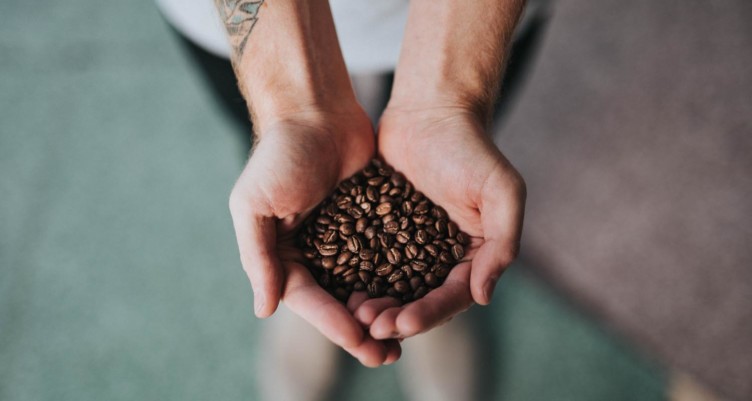What kind of role does acid play in coffee?

Professional coffee knowledge exchange more coffee bean information please follow the coffee workshop (Wechat official account cafe_style)
Acidity, one of the most cherished and controversial characteristics of boutique coffee, is loved and rewarded by consumers in the third wave of coffee.
What is acidity? Why do you get this taste from coffee? Is it good or bad? How to strengthen or weaken acidity in the process of baking and cooking? Let's embark on a journey to solve these problems!
What is Acidity?
Lively, spicy, sharp, bright, fruity, sparkling. These are commonly used words to describe acidity. Although we have many adjectives, none of them can really explain "acidity".
Acidity is not easy to define. This is mainly because it has many different forms. It affects the flavor and aroma direction, and may bring the characteristics of fruit, the sweetness of nectarine and the juicy feeling of apple.
But at the same time, acidity is also a chemical ingredient that exactly affects the taste of coffee, either good or bad. And acidity can also adjust the balance of coffee, if the acidity is too high, it will become sour, people do not like this kind of coffee, but without acidity, coffee will become mediocre.
Acidity in the microcosm
Organic acids include citric acid, malic acid, quinic acid, acetic acid, succinic acid and tartaric acid, so the fruity acids are the "good" acids you want to taste in your coffee. Their role in coffee is as follows:
Malic acid is similar to the acidity felt in green apples, so you can imagine the juicy and refreshing taste of green apples in coffee.
Citric acid has more citrus fruit properties, which can be associated with the acidity obtained from lemons, oranges and nectarines.
Tartaric acid feels like a grape, although it is also often found in bananas.
Acetic acid is closer to vinegar and will not feel very pleasant.
Chlorogenic acid in coffee is broken down (during baking) into quinic acid and caffeic acid. The problem is that quinic acid is not a good acid, it has an effect on the bitter, astringent and sour taste of coffee.
Raw acidity: why some coffee beans are more lively than others?
No matter how you adjust the roasting and extraction, there are always some coffee beans that contain more organic acids than others, which are affected by origin, variety, treatment, climate and other factors.
Origin: each producing area has different types of soil characteristics, resulting in different acidity. Just like Kenya coffee beans contain more malic acid, while Colombian coffee beans are more common is citric acid.
Variety: the variety of coffee beans has a vital effect on the acidity of coffee. Arabica, for example, tends to have less chlorogenic acid, which in turn reduces its acidity. Special varieties, such as SL28/34, which is rich in Kenya, have what are known as bright and pleasant acidity.
Climate & altitude: the most coveted coffee beans usually grow at high altitudes, although we have to admit that temperature is a more important factor than altitude. Coffee beans grown in lower temperatures mature more slowly and develop more complex flavors. After extraction, coffee beans have more acidity and aroma than coffee beans grown at low elevations in the same area.
Treatment: washed coffee beans through the past peel, pulp and other processes to remove most of the fructose, so that the retained acidity is very bright. On the other hand, the coffee beans in the sun are relatively intact in the process of processing, which increases the overall sweetness, and the acidity is more easily perceived.
How to control acidity during baking?
First of all, you can't bake to create a flavor that coffee beans don't have. Second, all you can do is strengthen or weaken the acidity by baking.
The lighter the coffee beans are roasted, the more they can show their original flavor (but not so shallow that the extracted coffee is full of sour and grass); on the contrary, the deeper the roasting will bring more roasting flavor and even bitterness, it is an art to bake coffee beans without bitterness.
But baking beans is not a matter of keeping coffee beans in the baking machine for enough time. This is about how you adjust the temperature and wind in order to reflect the best characteristics of coffee beans.
High temperature can bring out acidity, but be careful not to get too high so as not to burn the coffee beans. Mainly depends on the variety of beans, the softer the beans, the milder the relative temperature. Your goal should be not to stretch too long, but also to remember that too short can lead to bitterness.
How to control the acidity in the cooking process?
Suppose you have a properly roasted high-altitude Ethiopian coffee bean whose flavor is characterized by an emphasis on its bright acidity. Do you think you can brew a delicious cup of coffee? I'm not sure! If your brewing method is wrong, a cup of coffee with no flavor is waiting for you. Similarly, if the extraction is not enough, a medium-baked, chocolate-flavored Brazilian bean may be drenched by you.
Fruit flavor and acidity are extracted first, followed by sweetness and balance, and finally bitterness. This means that under-extracted coffee tastes sharp, lacks sweetness, and does not have a certain bitter taste balanced with acid, while over-extracted coffee can be so bitter that sweetness and acidity cannot be perceived. The most important thing must be balance.
How to control extraction?
There are some small rules to follow: the finer the grinding, the faster the extraction, the thicker grinding means more acidity, and the finer grinding means more bitterness. The longer the cooking time, the longer the extraction time; short time extraction brings acidity, long time extraction brings bitterness. The higher the water temperature, the faster the extraction, but if the water temperature is too low, the acidity cannot be extracted.
Therefore, higher water temperature, thicker grinding and shorter brewing time can be used to get more sour coffee. If it is too tart, the grinding can be adjusted accordingly to increase the cooking time.
Acidity is an extremely complex problem, and many factors will affect its appearance in coffee. But it is not difficult to brew coffee that satisfies one's preferences.
The beauty of coffee is that it has a lot of tonality, flavor and aroma. Different combinations of baking, variety, treatment and origin will bring a completely different acidity experience.
Remember: acidity brings balance and vitality to the coffee you brew, and it is an important part of a delicious cup of coffee, whether you like it or not.
Important Notice :
前街咖啡 FrontStreet Coffee has moved to new addredd:
FrontStreet Coffee Address: 315,Donghua East Road,GuangZhou
Tel:020 38364473
- Prev

The shepherd found coffee? The second largest traded product in the world? How many rumors do you know about coffee?
Professional coffee knowledge exchange more coffee bean information Please follow the coffee workshop (Wechat official account cafe_style) in this era of false news and out-of-date information, sometimes it is really difficult for us to know what is true and what is false. Today, let's talk about the five most popular rumors in the coffee industry. Around the origin and efficacy of coffee, there are many high-end.
- Next

Storage of fresh coffee beans can coffee beans be stored in the refrigerator?
Professional coffee knowledge exchange more coffee bean information Please pay attention to the coffee workshop (Wechat official account cafe_style) drinking coffee is about fresh, and if the coffee beans are not preserved properly, it will accelerate the aroma loss of coffee beans, thus affecting the taste of coffee, so the preservation of coffee beans is a key point. Roasted coffee beans are easily oxidized by oxygen in the air.
Related
- Beginners will see the "Coffee pull flower" guide!
- What is the difference between ice blog purified milk and ordinary milk coffee?
- Why is the Philippines the largest producer of crops in Liberia?
- For coffee extraction, should the fine powder be retained?
- How does extracted espresso fill pressed powder? How much strength does it take to press the powder?
- How to make jasmine cold extract coffee? Is the jasmine + latte good?
- Will this little toy really make the coffee taste better? How does Lily Drip affect coffee extraction?
- Will the action of slapping the filter cup also affect coffee extraction?
- What's the difference between powder-to-water ratio and powder-to-liquid ratio?
- What is the Ethiopian local species? What does it have to do with Heirloom native species?

